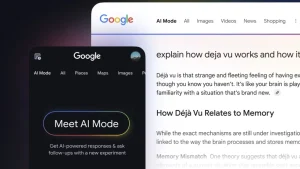The main characteristic we look for in smart devices is reliability. No one wants to turn off a smart bulb for it to turn on by itself in the middle of the night unless that’s a part of a predetermined routine. And that’s exactly what keeps happening to some Google Home users. It seems that Google Home randomly turns on lights and they are unsure why that’s the case. We just might have some answers for you.
In this article:
ToggleWhy does my Smart Light come on by itself?
If your smart light comes on by itself, it’s usually due to a power outage or a routine, although there are some other things like a Google Home bug or a permanent glitch in the Google Home/Nest smart speaker/display that turns on the light. Whatever the problem is, we provided some applicable solutions to tackle it from all angles. You can find them below.
1. Power cycle affected lights and check for a power outage
The first thing you can try is power cycling the affected lights or plugs with the physical switch or by unplugging them and plugging them in again. This might be a connectivity issue and it should be resolved after the device acquires a network connection again, upon rebooting.
The main reason why smart lights turn on on their own is a power outage. Once the power comes back, the light will turn on its own assuming that the physical switch is set to ON. That’s another thing you need to consider. Also, just for good measure, restart all smart speakers/displays in your household.
2. Check routines in Google Home and the companion app
As you are probably aware, Google Home Routines allow you to turn off and turn on smart lights with different automatized actions. There are also Home and Away routines that will use Presence Sensing or phone location to control devices. So, make sure to check if there are no routines that automatically turn on lights before moving to the next step.
You can check all routines in Google Home and, in the future redesigned app, under Automations. Don’t forget to check Home and Away routines, as well.
3. Reinstall Google Home
The Google Home app for Android and iOS is not ideal but it usually works without bigger hiccups. Google is focusing on usability and design a bit more in recent months but, like with any other app, Google Home tends to start showing issues after some time. A good Android-related troubleshooting step, in this case, is to clear the local data from the app first, and then if the issue persists, reinstall the app. However, you can only reinstall the app on iOS for obvious reasons.
You can also uninstall the companion app that’s necessary to set up the smart light.
Here’s how to clear local data from Google Home on Android:
- Open Settings.
- Tap Apps.
- Choose Google Home from the list of available apps.
- Tap Storage.
- Tap Clear data and restart your phone.

- Open Google Home and sign into your home again.
- Alternatively, navigate to Play Store, search for Google Home, and expand the app. After that, uninstall the app and install it again.
And this is how to reinstall Google Home on iOS:
- Tap and hold on to the Google Home shortcut.
- Select Remove App.
- Tap Delete App.
- Then navigate to App Store and install Google Home again.
4. Unlink the smart light and link it again
Another thing you can try is to unlink the smart light that randomly turns on and link it again. You can do that in Google Home on your smartphone and this action doesn’t require setting up the light again. Basically, third-party bulbs, strips, and all other devices are set up in the companion app provided by OEM. Unlinking just removes the service and, by extension, the device from Google Home. You can still control it with the companion app (Smart Life, Philips Hue, Yeelight, etc.).
Here’s how to unlink a smart light and link it again in Google Home:
- Open Google Home.
- Select your home and tap on the smart light that gives you trouble.
- Tap on the cog icon to open Settings.
- Tap Unlink and confirm.
- Then go back and tap on the plus icon at the top left corner.
- Select Works with Google.
- Search for the OEM and select it.

- Sign in with the account you used in the companion app to set up the device.
If Google Home still randomly turns on lights, try resetting the smart light by following a reset sequence provided by the OEM.
5. Reset the smart light and add it again
If a smart bulb or stripe (smart switch, plug, lock, or anything else compatible with Google Home for that matter) won’t work as intended even after previous steps, you can always reset it. Now, the reset procedure isn’t the same on all devices so you’ll need to check the instructions in the companion app or find them online, ideally on the OEM support website. Once you reset the problematic light that creepily turns on on its own, you should set it up in the companion app and then link the service to Google Home again.
Just don’t forget to remove the light from Google Home first before linking the “new old” bulb again. To do that, follow the instructions in the previous step.
6. Reset the Google Home/Nest speaker or display
Strangely enough, some users report that they scheduled a certain light some time ago and that the light keeps on turning on at that exact time every day. That must be sort of a bug with the smart speaker/display and, if that keeps occurring, we suggest resetting the Google Home/Google Nest device to factory settings and setting it up again. You can learn in detail about the reset procedure for every Google-made device on the support page.
Once you reset the device, open Google Home and remove the speaker/display before navigating to Add+ > Set up a device > New Device. Once there, enable the Location Services and Bluetooth, and follow further instructions to set up your Google Home speaker or display once again.
With that said, we can conclude this article. Thank you for reading and don’t forget to share your thoughts, questions, or suggestion with us and other readers. Did we miss mentioning an alternative solution? Tell us in the comments below.




